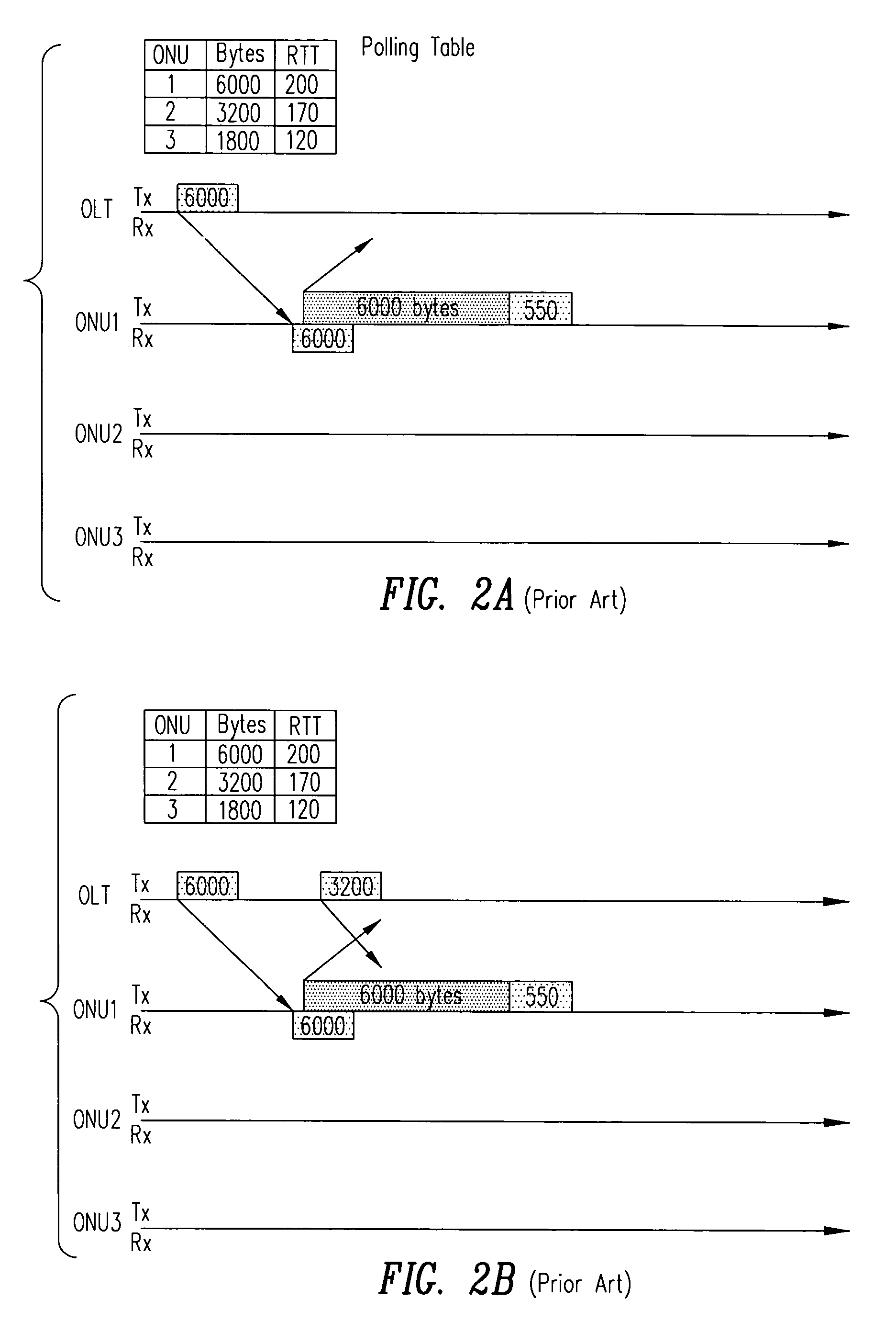Allocation of upstream bandwidth in an ethernet passive optical network
a passive optical network and upstream bandwidth technology, applied in data switching networks, multiplex communication, digital transmission, etc., can solve the problems of inability to handle burst traffic, increased polling cycle disadvantages of simple hub polling, and even more pronounced problems, so as to reduce delay and/or jitter, and eliminate the effect of related delay variation and/or jitter variation
- Summary
- Abstract
- Description
- Claims
- Application Information
AI Technical Summary
Benefits of technology
Problems solved by technology
Method used
Image
Examples
Embodiment Construction
[0048]A number of optical network units (ONUs) communicate with an optical line terminal (OLT) in a passive optical network (PON) in accordance with the invention by transmitting upstream signals in a superframe 400 (FIG. 4A). A similar superframe may be used by the OLT in communicating in the downstream direction with the ONUs. Each of the ONUs and the OLT are equipped with hardware of the type well known in the art for implementing a PON. The PON is implemented with an optical branching / coupling element between the ONUs and the OLT. The optical branching / coupling element is a passive device that does not need an electric source. The OLT is connected to the optical branching / coupling element through a single optical fiber (or a double optical fiber for redundancy). Each of the ONUs is connected to the optical branching / coupling element through an exclusive optical fiber.
[0049]Each of the ONUs and OLT may contain a central processing unit (CPU) that controls operation of a media acc...
PUM
 Login to View More
Login to View More Abstract
Description
Claims
Application Information
 Login to View More
Login to View More - R&D
- Intellectual Property
- Life Sciences
- Materials
- Tech Scout
- Unparalleled Data Quality
- Higher Quality Content
- 60% Fewer Hallucinations
Browse by: Latest US Patents, China's latest patents, Technical Efficacy Thesaurus, Application Domain, Technology Topic, Popular Technical Reports.
© 2025 PatSnap. All rights reserved.Legal|Privacy policy|Modern Slavery Act Transparency Statement|Sitemap|About US| Contact US: help@patsnap.com



